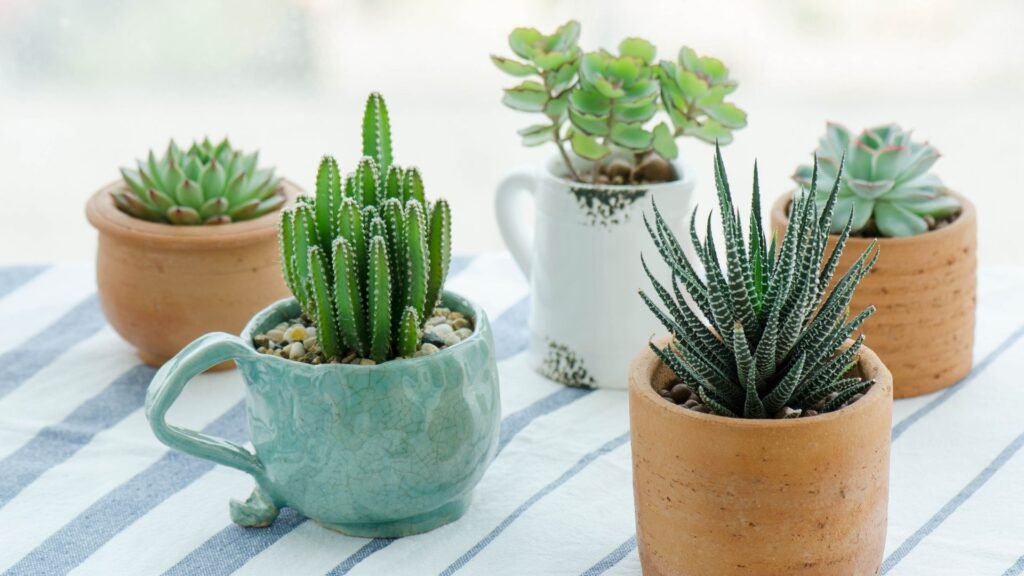Caring for Succulents: Tips and Tricks
- By -Luis Magee
- Posted on
- Posted in Flowers and plants
Succulents are popular for their unique shapes, vibrant colors, and low-maintenance needs. Whether you’re a beginner or an experienced gardener, these tips and tricks will help you keep your succulents healthy and thriving.

Choosing the Right Succulents
When selecting succulents, choose varieties that suit your environment. For indoor spaces, opt for succulents like aloe vera, jade plants, and echeveria. For outdoor gardens, consider hardier varieties like agave and sedum. Ensure that the plants are healthy, with firm, plump leaves and no signs of pests or disease.
Providing Adequate Light
Succulents need plenty of sunlight to thrive. Place them in a spot that gets at least six hours of bright, indirect light each day. If you’re growing succulents indoors, a south-facing window is ideal. For outdoor succulents, choose a location with full sun or partial shade, depending on the variety. Monitor your plants for signs of light stress, such as etiolation (stretching) or sunburn (brown or white patches on the leaves).
Watering Wisely
One of the most common mistakes in succulent care is overwatering. Succulents store water in their leaves and can go for long periods without additional moisture. Water your succulents thoroughly, but infrequently. Allow the soil to dry out completely between waterings. A general rule of thumb is to water every 2-3 weeks, but this can vary based on the season, humidity, and pot size. Use the “soak and dry” method: water until it drains out of the bottom of the pot, then let the soil dry out completely before the next watering.
Using the Right Soil
Succulents need well-draining soil to prevent root rot. Use a cactus or succulent potting mix, or make your own by mixing regular potting soil with coarse sand or perlite. This helps to improve drainage and aeration. Avoid using garden soil, which retains too much moisture and can lead to root rot.
Choosing the Right Container
Choose containers with drainage holes to prevent water from sitting at the bottom and causing root rot. Terracotta pots are a great option because they’re porous and allow the soil to dry out more quickly. Avoid using glass containers without drainage, as they can trap moisture and create an unhealthy environment for your succulents.
Fertilizing Sparingly
Succulents don’t require a lot of fertilizer. Feed them with a balanced, water-soluble fertilizer diluted to half strength during the growing season (spring and summer). Fertilize once a month to provide the necessary nutrients. Avoid fertilizing during the dormant period (fall and winter), as the plants won’t utilize the nutrients effectively.
Protecting from Pests
While succulents are generally resistant to pests, they can occasionally attract mealybugs, aphids, and spider mites. Inspect your plants regularly for signs of infestation, such as white cottony spots, sticky residue, or webbing. Treat any infestations promptly with insecticidal soap, neem oil, or by wiping the affected areas with a cotton swab dipped in rubbing alcohol.
Propagating Succulents
Succulents are easy to propagate, making them a favorite among gardeners. You can propagate succulents from leaves, cuttings, or offsets. To propagate from leaves, gently twist off a healthy leaf and let it dry out for a few days. Place the leaf on well-draining soil and mist it occasionally until new roots and a baby plant form. For cuttings, cut a stem with a sharp, clean knife, let it callous over, and then plant it in soil. Offsets, or “pups,” can be separated from the mother plant and planted individually.
Conclusion
Caring for succulents is a rewarding and enjoyable experience. By following these tips and tricks, you can ensure your succulents remain healthy and vibrant. Remember to choose the right plants, provide adequate light, water wisely, use well-draining soil, and protect from pests. With a little attention and care, your succulents will thrive and bring beauty to your home or garden for years to come.



